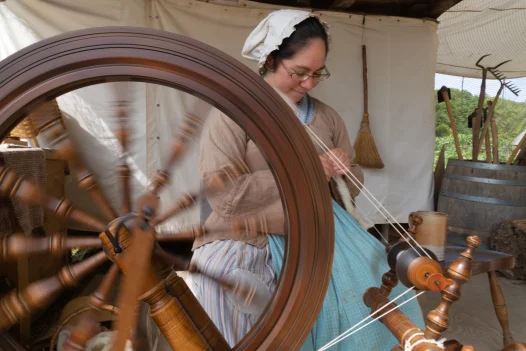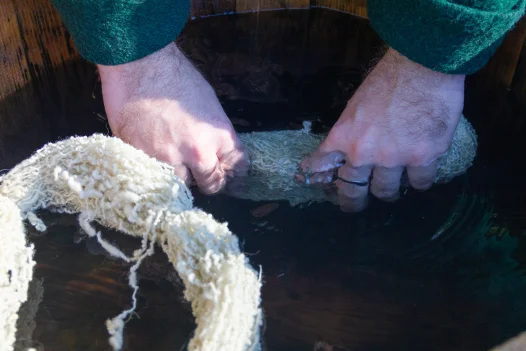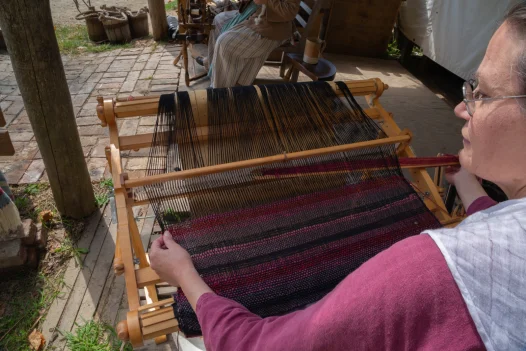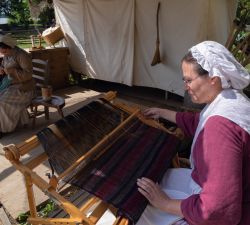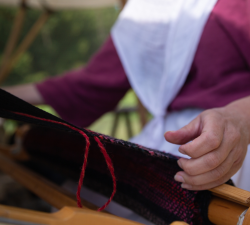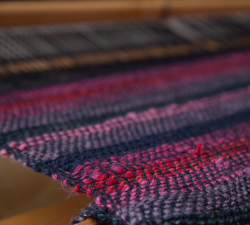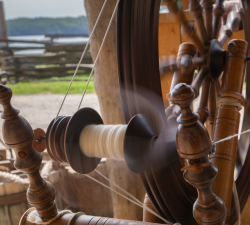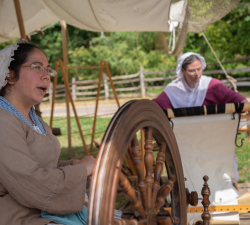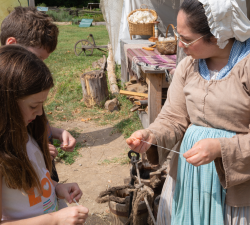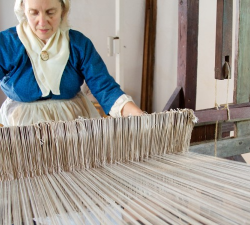Experience History Firsthand by Learning a New Skill
Visit the Spinning House
Wednesday - Saturday (April - October)
Learn about textiles at Mount Vernon and in the 18th century from our historic trades interpreters, who will demonstrate spinning and weaving.
George Washington had anywhere between 600 to 800 sheep at Mount Vernon and had flax grown on site.
From both of these fibers – wool and linen – Washington would have enslaved and hired workers make clothing for his enslaved fieldhands as a way to save money within his business.
This demonstration is staffing and weather dependent.
See the Process of Natural Dyeing
Select Dates (9 a.m. to 12 p.m. at the pole shelter on the Farm)
Come to the Farm to see demonstrations of how we can use these dyes to turn our yarn yellow, blue, purple, and red.
- Fustic (Apr. 23)
- Indigo (May 28)
- Logwood (Jun. 25)
- Cochineal beetle (Sept. 24)
People of the 18th century loved to wear different colors and used different types of plant and other dyes to achieve those colors.
These demonstrations are weather and staffing dependent.
Participate in a Hands-On Weaving Program
May 23 (9 a.m. to 12 p.m. at the greenhouse)
Come to the greenhouse to learn about the development and history of weaving and try out different types of looms.
No prior weaving experience is necessary, but this program is recommended for ages seven and up.
Weaving was an important way to create cloth throughout history and Washington hired weavers to make cloth for clothing enslaved fieldhands to save money at Mount Vernon.
See the Process for Making a Shawl From Wool
May 16 (9 a.m. - 12 p.m.)
Watch the step-by-step process of turning sheep wool into a shawl.
Watch the shearing of a Hog Island Sheep on the 12-acre field.
Then, follow our historic interpreters to the greenhouse where they will demonstrate how wool is carded, spun into thread, and finally woven on a loom into a shawl.
